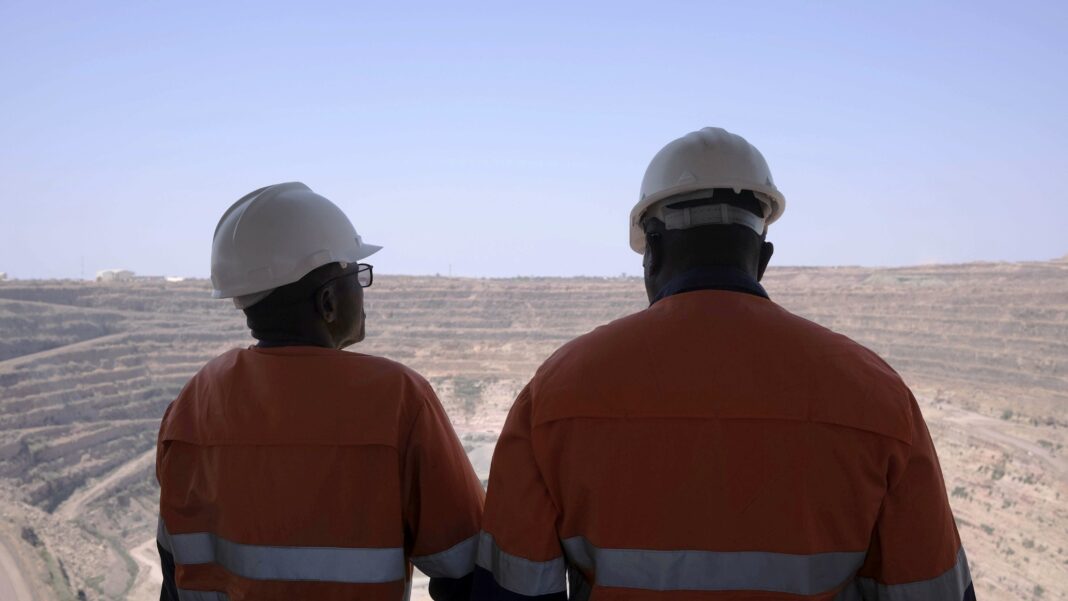Botswana’s economy, once thriving on diamond mining, faces challenges due to declining global prices and competition from lab-grown alternatives. The country, which has transformed from poverty to Africa’s wealthiest per capita since gaining independence, relies heavily on diamonds for revenue. President Masisi aims to diversify the economy and enhance local processing to secure future growth. However, critics question the government’s pace in implementing these plans, while citizens like Everson Mpatane strive for self-reliance amid rising unemployment.
Standing on the brink of a gorge that has transformed Botswana into one of the wealthiest nations in Africa, the vastness may not strike you immediately. The sheer depth of the Orapa mine becomes evident as you gaze down 300 meters, where small vehicles appear to navigate the rugged terrain, each carrying tons of rock—the very source of Botswana’s riches.
“Tomorrow, we will blast again. It’s always an exciting day,” an engineer informs participants on a mine tour, detailing the scale of this colossal site. Nearly two kilometers wide and more than a kilometer long, Orapa is the world’s largest diamond mine, operational since 1971 and pivotal in Botswana’s transformation.
When Botswana gained independence in 1966, it was marked by extreme poverty, with only 40 university graduates, a handful of secondary schools, and minimal infrastructure. The discovery and mining of diamonds in Orapa turned the tide for the nation.
Today, Botswana boasts the highest per capita income in sub-Saharan Africa, aside from the island nations of Seychelles and Mauritius, and has recorded low corruption levels. The country has established over 300 secondary schools, and the roads stretching from the capital, Gaborone, to the mining regions are smooth and well-maintained, spanning more than 500 kilometers without significant potholes.
Over time, as mining operations deepened, Botswana’s development surged. However, this trend is now facing challenges. The demand for diamonds is declining, particularly in crucial markets like China and the USA, while synthetic diamonds are gaining popularity. In 2023, the Orapa mine yielded 12 million carats (approximately 2.5 tons) of diamonds; projections for the current year estimate this will be halved.
This downturn is translating into a significant drop in state revenues, with about 80% of Botswana’s export income derived from diamonds. In July, the International Monetary Fund revised its growth forecast for Botswana in 2024 from 3.6% to just 1%.
A Vision for Economic Transformation
As President Mokgweetsi Masisi addresses a crowd at an election rally in Lobatse, the mood shifts from anticipation to restraint. Having served as a teacher, Masisi speaks methodically about advancing industry and bolstering agriculture, pledging “a new economy” despite the struggling diamond sector.
With elections imminent, Masisi’s re-election, typically a formality for the Botswana Democratic Party, is now uncertain due to the faltering diamond industry.
Delivering an hour-long speech, Masisi articulates his government’s plans even as the audience’s attention wanes. “We have a strategy,” he assures, a statement that echoes more as a desperate plea than a clarion call for progress.
A Strategic Shift Against De Beers
The government’s approach to safeguard Botswana’s future hinges on two critical strategies: diversifying the economy to lessen reliance on diamonds and securing a larger revenue share from the diamond industry. Last year marked a pivotal negotiation that felt like a fresh independence movement.
Botswana’s success has historically stemmed from a partnership with De Beers, the world’s leading diamond producer, through their joint venture, Debswana, since 1969. Traditionally, Botswana kept 25% of the mined diamonds, but in a recent renegotiation, that figure will escalate to 50% over the next decade.
However, this larger share poses a risk if Botswana cannot effectively market these diamonds, given that the industry’s stability is currently wavering.
The Minister Speaks
Mining Minister Lefoko Moagi, rocking the party’s colors and a whistle as campaign manager, sits in the VIP section during the rally. Although he initially promised an interview about the diamond sector, Moagi is pressed for time. In a written statement later, he emphasizes that the diamond industry remains crucial for Botswana’s growth and aims to position the country as a global diamond trading hub.
The government intends to enhance local processing of diamonds, a strategy referred to as “value chain development,” which aims to create jobs and improve skills in the country.
Challenges in the Processing Industry
In the capital, signs of an emerging diamond processing industry stand behind security barriers. Siddarth Gothi, an Indian expat managing KGK, the largest diamond cutting company in Botswana with 500 employees, highlights the pressing need for trained staff in an industry that employs about 4,000 individuals.
Gothi conducts a tour of his facility, where workers analyze digital scans of diamonds. “If they make
